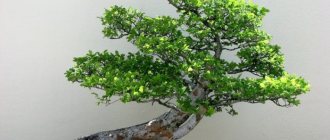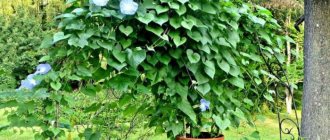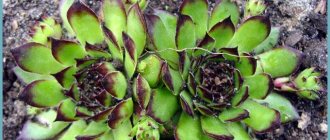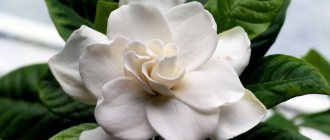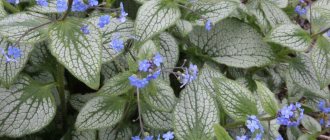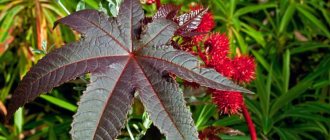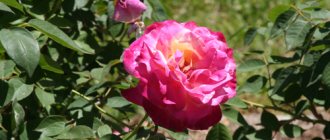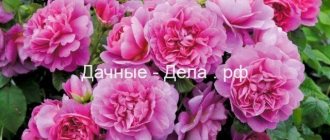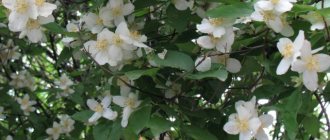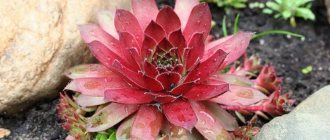Ground cover perennials are simply indispensable for landscape design, complementing and emphasizing compositions of tall plants. Besides, they are no less beautiful in themselves. They create entire lawns and clearings in the garden with muted greenery and delicate flowers. Most perennials creeping along the ground are unpretentious and, if chosen correctly, will delight the eye with their elegant beauty for many years.
Garden design with tall and creeping plants
Benefits of growing ground cover perennials
Unlike ordinary annual garden crops, groundcover perennials require virtually no care other than annual fertilizing and timely thinning. Creeping flowers can be grown in any region of the country, since among their diversity it is easy to choose a plant suitable for a specific climatic zone. In addition, many of them feel good in rocky areas with poor soil, where not a single ornamental crop takes root.
Comment! This makes it possible to grow a blooming multi-colored “carpet” in almost any corner of the garden.
The main advantages of planting ground cover perennials on the site:
- displacement of weeds;
- soil protection from erosion and drying out;
- rapid growth.
In addition, wintering perennials grow independently, are unpretentious and do not require special attention. They do not need to be sown every spring; most species tolerate low temperatures in winter and direct sunlight in summer, with the exception of heat- or shade-loving ones.
Groundcover perennials for garden decoration
Beautifully blooming and variegated creeping flowers are the best decoration for flower beds, borders, and borders . They are widely used to decorate rocky gardens and tree trunks. Particularly good are ground cover plants that bloom all summer and weave their colored mats in the area.
However, decoration is not the only function of such plants. Growing ground cover crops in the garden provides a number of benefits:
- Colored mats are excellent assistants in the fight against weeds. Growing densely, they simply displace most weeds from their site.
- Plants prevent the fertile layer of soil from being washed away by rain and blown away by the wind.
- Low-growing crops saturate the soil with oxygen and improve its fertility, thereby serving as mulch.
- Ground cover flowers grow and create a bright carpet in a fairly short time, while hiding the defects of the area.
With the right choice of plant type, you can easily make your garden well-groomed and clean. You just need to pay attention to the fact that most low-growing perennials prefer sunny areas , however, many of them grow well in the shade.
Types of ground cover perennials
There is no strict classification of groundcover perennials. However, all representatives can be divided into groups according to the following parameters:
- type of foliage cover – deciduous, evergreen;
- attitude to lighting – shade-tolerant, light-loving;
- soil moisture requirements – moisture-loving, drought-resistant;
- growth rate – fast growing, slow growing;
- flowering time – early flowering, late flowering, decorative.
Advice! Taking these parameters into account, you can choose plants for your site so that, from early spring to late autumn, flower arrangements will delight the eye.
Features of choosing ground cover plants
When choosing ground covers for your site, it is necessary to take into account not only the main varietal characteristics of these crops, but also correctly determine the place for their placement. Great importance is attached to the rules of agricultural technology and the nuances of cultivation:
- Zoning - compliance with existing local climatic conditions. The durability of ground cover planting directly depends on frost resistance, drought resistance and other characteristics related to climate and weather.
- Strength and growth rate. This indicator determines the approximate period of development of the selected area by the ground cover plant.
- Ability to tolerate pruning well and recover quickly after it.
- The ground cover plant's immunity to various diseases, as well as resistance to pest attacks.
- Decorative qualities (color and texture of foliage, bush height, flowering, etc.).
It is important to immediately find out which ground cover plants are most effective in displacing the weeds growing there from the designated area.
Creeping perennial flowers
This variety of groundcover perennials is used to create small decorative areas along borders, fences or on an alpine hill. Since most of them are low-growing, it is more appropriate to plant them in the foreground of a garden composition.
Attention! Most creeping perennials grow rapidly, taking up space not only from weeds, but also from cultivated plants.
Iberis
A perennial frost-resistant semi-shrub ground cover plant that came from the Mediterranean, belongs to the Brassica family. It has dense greenery of rich color and snow-white umbrella inflorescences that abundantly cover the bush.
During the flowering period, it emits a strong, pleasant honey aroma.
It reaches a height of 25-35 cm, narrow oblong leaves 5-7 cm long, located alternately on the branches. Iberis is widely used to decorate gardens and terraces and is planted near gazebos.
Aubrietta
Creeping perennial, evergreen, ground cover, herbaceous plant native to Central Asia, belongs to the Brassica family. It is frost-resistant and gets along well with other garden crops.
The color of obrietta inflorescences can be white, blue, lilac, pink or crimson
The bush is low-growing, reaching a height of no more than 15 cm. Jagged green leaves of an oblong shape are almost completely covered with densely growing four-petaled bright flowers. This perennial is often used to decorate flower beds or plant vertical compositions.
Dianthus
This perennial ground cover crop can be found throughout Europe; it belongs to the Clove family. The herb lives up to nine years and tolerates low temperatures down to -40 °C.
The flowering period of grass lasts about one and a half months
The ascending stems of the plant reach 10-15 cm high and are covered with small elongated bluish-green leaves. The color of small (up to 1.5 cm) flowers varies from soft pink to deep red.
Application of ground cover flowers in the landscape
The listed advantages of ground cover species make them an excellent tool for landscape design. Very diverse in scope and decorative roles.
Ground cover plants are less demanding and can be planted as a replacement for a lawn where careful care is not possible and in hard-to-reach places where it is difficult to mow the lawn. These are steep slopes, narrow spaces, far corners of the garden. Ground covers will also be a good substitute for a lawn in shady places where grasses do not grow well.
Shade-tolerant ground cover plants - periwinkle, heuchera, tenacious, ivy-shaped budra, violet - will create a decorative green covering here. Due to their aggressiveness, ground covers also resist weeds well - they can be used in places where the lawn suffers greatly from their invasion. But when using ground cover plants as a replacement for lawn, keep in mind that in most cases they are not as resistant to trampling as lawn grasses. It’s not worth walking through such a green clearing often, much less organizing sports competitions on it.
The design of rock gardens using ground cover plants is associated with the origin of many of them. On the rocky hill they feel at home in the most literal sense. Undemanding to soil and watering, limited volume of the root system make ground covers ideal inhabitants of rockeries. And a dedicated placement surrounded by rock fragments protects other plants from excessive aggressiveness.
Another group of ground cover plants - forest natives - is ideal for decorating tree trunk circles. They will thrive under the canopy of trees, unlike lawn grasses and many flowering plants, which are suppressed in the shade. Ground cover species will create a fluffy textured cushion of greenery under the trees and protect the tree trunks from drying out.
Thanks to their texture and decorative foliage, ground cover plants make very decorative borders. Especially suitable for this role are those species that form rosettes of leaves and grow in dense cushions. But remember their expansiveness. To prevent such a border from taking up the entire flower garden, limit the space allocated to it with a border strip.
Like borders, ground cover plants can be used to create textured or colored ribbons and shapes. They will help to decorate the surface of the lawn and create an unusual decoration in the garden. Contrast of textures, different heights and combinations of leaf colors will help with this.
Ground cover plants are ideal to plant along the top of retaining walls and at their base. Firstly, thanks to its unpretentiousness. Secondly, because of the ability to form lush green cushions from intertwining creeping shoots. They will create a vegetative end to the rocky wall, protect the soil from crumbling, and drooping shoots will “flow” from the top in soft waves. They look especially beautiful during the flowering period.
Fast-spreading flowering groundcovers create a dramatic display for paths and stairs. They will fill the gaps between the stones with dense, textured greenery. For such a role, it is worth choosing short, close-to-the-ground forms. Select the size of the leaves based on the scale of the stone paving slabs and the spaces between them.
Ground cover perennial flowers
Such groundcover perennials are sown in garden plots between fruit trees or on rocky slopes.
Important! They quickly take over the territory with their shoots, turning a lifeless landscape into a blooming garden.
Thrift
A perennial ornamental herbaceous plant that naturally lives on the mountain slopes of North America, Eastern Europe, Mongolia and the Mediterranean, it belongs to the Vinaceae family. The dense basal rosette of this ground cover perennial is formed from narrow linear-lanceolate leaves and reaches a height of 15-20 cm (during the flowering period - up to 60 cm).
Read more Bulbous perennials overwintering in open ground
The inflorescences are quite large - about 5-7 cm in diameter
They are capitate, formed from small flowers of white, pink or purple hue. Armeria begins to bloom in May and continues until the beginning of October. It tolerates frost and prolonged drought well, is unpretentious, and thrives in poor rocky or sandy soils.
Alyssum
This groundcover perennial plant can be found in nature in North Africa, Europe and Asia; it belongs to the Brassica family and has more than 100 species. Strongly branching stems reach a height of 15-40 cm and are covered with small pubescent leaves of an obovate shape.
Alyssum flowers have a distinct honey aroma, which attracts bees
Racemose inflorescences consist of small flowers in white, yellow, lilac, purple, pink or red. The flowering period begins in May and ends in late autumn.
Phlox subulate
This fast-growing, profusely flowering groundcover perennial can be found in the wild on the rock embankments and sandhills of North America. The stems of the plant are 15-17 cm high, densely covered with hard leaves up to 15 mm long.
Phlox subulate forms evergreen and dense carpets in the garden
Pink, white, purple or lilac flowers are quite large - up to 25 mm in diameter, collected in inflorescences of 5-7 pieces. Phlox blooms twice a season: from mid-May to late June and from August to September.
Popular types
Low-growing plants are classified as creeping species. Their shoots quickly grow, filling the free space around them. Ground cover perennials that bloom all summer fit well into the landscape design of any site.
Aubrieta deltoid
The perennial is a herbaceous evergreen plant. Grows up to 15 cm. Blooms twice in one season. The first wave of flowering occurs in early June, and the second in September.
The flowers are small lilac, lilac or purple. The leaves are oval-shaped with jagged edges and light green in color. Aubrieta (aubrecia) is an ancient variety that was known back in the 18th century. All other species were obtained from it during the selection process. The plant is unpretentious:
- can grow on depleted soils;
- does not require regular watering;
- can do without fertilizing.
Aubrieta is propagated by cuttings, dividing the bush, and also grown from seeds. To preserve the decorative appearance, dried flowers, leaves and shoots are systematically removed.
Advice! Aubrecia is sensitive to strong gusts of wind, so it is often planted along a fence or wall.
The plant tolerates frost well, but experts advise covering it with straw for the winter.
Phlox awl-shaped
A perennial ground cover plant for the garden, common among gardeners. Grows well in sunny places. The height of the bush reaches 15 - 17 cm. Phloxes quickly cover the entire area of the site with a dense carpet.
They bloom in two stages: in spring and early autumn. Flowers are white, blue, pink and red. Subulate phloxes are distinguished by long, sharp leaves, which is why they got their name.
The plant is suitable for flower beds, alpine hills and borders. It is resistant to cold weather, but for the winter it is recommended to cover it with spruce branches or covering material.
Important point! Although phlox subulates are perennials, they need to be renewed every 5 years.
They do not require special care. It is enough to water them on time, apply fertilizers and weed.
Iberis perennial
Iberis is also called peppercorn or stennik. The height of the plant, depending on the variety, can be from 10 to 40 cm. The stem can be creeping or erect. An umbrella-shaped inflorescence is collected from small flowers.
They come in white, pink, lilac and red. Fragrant flowers attract bees, so Iberis is classified as a honey-bearing crop. Lush flowering begins in early summer, lasts about 3 weeks and repeats at the end of August. For good growth and flowering you need:
- choose an open, sunlit area for planting;
- provide moderate watering;
- In summer, feed with mineral fertilizers.
After the plant has flowered, it is pruned. Iberis can grow in one place for more than 6 years.
Arabis
Creeping perennial is often used in landscape design. The height of an adult plant reaches 30 cm. It is also called rezuha because the stem is covered with hard fibers, and the heart-shaped leaves have dense hairs.
Small flowers are collected in inflorescences. They come in regular and terry. The color can be lilac, yellow, white or pink. Lush and long flowering begins in May.
The plant has a bright aroma and attracts bees. Arabis has good decorative qualities. For this, many flower growers and landscape designers love him. The plant is suitable for borders, mixborders and rocky gardens.
Kotula
This herbaceous plant from the Asteraceae family is also called palmetto. It loves damp places, so it is suitable for decorating ponds. Kotula is a low-growing species, grows up to 10 cm. It has feathery shiny leaves.
It blooms all summer with small yellow flowers that smell nice. Its stems are creeping and grow very quickly, forming a continuous mat. The plant is unpretentious. It is suitable for both sunny areas and partial shade. It is resistant to frost, but does not tolerate stagnant water.
Ground cover perennials for the garden
Ground cover perennials allow you to create bright areas in the garden that stand out among the trees and shrubs. They are used to decorate slopes, rock gardens, and the banks of artificial reservoirs, since with their beauty they enliven raw stones and add bright colors to the overall appearance of the composition.
Veronica
An herbaceous or semi-shrub groundcover perennial, belongs to the Plantain family, and grows in nature on the edges of forests and meadows. There are about 150 species in Russia, and more than 300 around the world.
The culture loves open areas, tolerates drought well, and is winter-hardy.
The inflorescences are blue, dark blue, pink or white and look like a spikelet or brush 12-14 cm long. The perennial reaches a height of about 50 cm, the flowering period lasts 40 days, starting in mid-July.
Heuchera
It is distinguished by a wide range of foliage colors, thanks to which it remains decorative from early spring until late autumn. Belongs to the Saxifraga family, the crop is used for landscaping rock gardens, parks, and planted along alleys and in front flower beds.
Heuchera foliage can be red, green, purple, yellow or silver-gray
The perennial has compact bushes, reaching a height of 40-50 cm, with leathery petiolate leaves, which can change their color several times during the growing season. It blooms throughout the summer, producing small white, cream or pink flowers on long peduncles.
Bryozoan
This herbaceous groundcover perennial belongs to the Carnation family. It is widespread throughout Europe and Asia. Used to create lawns on rocky terrain.
The greenery of bryozoans visually and to the touch resembles soft moss
The branched creeping stems of the groundcover perennial extend no more than 10 cm in length and are densely covered with bright green, narrow leaves, similar to needles. Shoots and foliage have glandular fibers. It blooms from July to September, producing white five-petalled inflorescences up to 5 mm in diameter on a bare peduncle.
Ground cover plants that bloom all summer
One of the advantages of creeping perennials is that they bloom from early spring until late autumn. In May, when muscari, crocuses, daffodils and early varieties of tulips have already bloomed, the garden begins to bloom rapidly, in which charming “rugs” appear in all their glory.
Sedum or sedum
This low-growing perennial plant is a great find for the garden and rock garden. Sedums form “creeping mats”, bloom profusely and have many varieties:
- thick-leaved sedum blooms with white flowers in early summer, creates dense thickets of bluish round leaves and reaches a height of only a few centimeters;
- Evers' sedum is covered with pink flowers in June;
- rock sedum blooms in late summer with crimson flowers, has elegantly descending shoots and flat bluish-colored leaves;
- spatulate-leaved sedum from the leaves of “roses” forms a carpet 6 cm high and blooms in mid-summer with yellow flowers;
- false sedum is a hybrid with leaves painted in different shades of green, and white, red, pink inflorescences that bloom all summer;
- Mountain sedum has elongated small leaves and yellow flowers that bloom almost all summer;
- Caustic sedum is a 7 cm tall plant with small leaves and yellow and green “stars” that bloom in early summer.
By planting different types of sedum in your garden, you can get a rock garden or mini-garden . You can decorate paths with sedums or make living compositions out of them on logs, stumps or in decorative flower pots.
Sedum is undemanding in terms of growing conditions, so it can grow even on random soil deposits. It does not require fertilizing or abundant watering. In order for sedum to bloom beautifully and for a long time, it should be planted in sunny areas of the garden.
Ground cover subulate phlox
Growing up to 15-20 cm in height, the plants create a dense green cover with flowers in raspberry, purple, red, white or pink shades.
Phlox bloom for the first time in early May, and delight summer residents until the end of June. They begin to bloom for the second time in September. These ground covers are suitable for sunny locations and love mineral, loose soils .
- The awl-shaped phlox has a height of 10 cm and long, pointed leaves that look like needles. It begins to bloom in May and blooms profusely until mid-June.
- Phlox Douglas is a low, compact plant that blooms in the second half of June.
Several varieties of phlox planted in one flowerbed will look very beautiful and bloom for a long time.
This extremely unpretentious plant loves dry soils and is afraid of waterlogging. When planting it, the soil must be mixed with dolomite flour and sand.
Phlox are universal flowers that can be planted in almost any type of flower bed. The plants will look great instead of a grass lawn, along a garden path, in a rock garden and on an alpine hill. In flower beds, it is better to combine them with dim alpine plants and decorative deciduous perennials.
Kotula or Ladonnik
Cotula comb, cinquefoil and rough are very popular among gardeners. This ground cover plant produces small, bright yellow flowers that emit a delightful scent. The shiny foliage of the palm tree contrasts beautifully with the flowers that bloom all season.
Kotula grows in moist soils and shallow waters, and feels comfortable in both partial shade and sun. This plant is perfect for areas with a small pond. It reproduces well by seeds, creating a bright, spectacular border .
Corydalis yellow
This herbaceous perennial plant, which is still rare in cultivation, is distinguished by its long flowering period.
In early spring, when even the snowdrops have not yet bloomed, the corydalis already delights gardeners with its yellow flowers. But even in the absence of flowers, the plant looks very attractive. Its openwork foliage gives the corydalis a decorative appearance. Recent Entries
Chainsaw or electric saw - what to choose for the garden? 4 mistakes when growing tomatoes in pots that almost all housewives make Secrets of growing seedlings from the Japanese, who are very sensitive to the soil
It is best to plant ground cover on light, lightly compacted soils. The plant blooms profusely in sunny areas, but also feels good in partial shade. It can be replanted at any age, in any weather, and even in a blooming state.
As it grows, the corydalis creates a mat 15-30 cm high , which will look good in a rock garden and in the shade of bushes and trees.
Highlander related
A ground cover perennial that blooms all summer, it is suitable for decorating borders and looks great in group plantings.
The plant grows up to 20-25 cm in height, has beautiful heart-shaped foliage and inflorescences collected in numerous small flowers. A truly magnificent sight can be enjoyed when the knotweed blooms. At this time, the crown of its bush is very similar to a white blanket.
The culture grows well in sunny and shady areas, and loves well-drained soil . The related highlander really does not like acidified areas, where it looks depressed and stunted. The plant tolerates frost well, but in winters with little snow it requires protection with spruce branches or covering material.
Dianthus grass
Throughout almost the entire growing season, carnation grass blooms.
Its small, bright red or red-white flowers resemble those of the common carnation. The herb has a height of up to 15 cm, low creeping ascending stems and small elongated bluish-green leaves. Carnation does not like stagnant water , so it is better to plant it in light, well-drained and fertilized soil in sunny areas of the garden.
Many gardeners use grass to decorate tree trunks. This not only looks beautiful, but is also beneficial for fruit trees.
Ground cover coniferous perennials
In landscape gardening, coniferous groundcover perennials are widely successful because they are evergreen. They are used in group or single compositions, making coniferous flower beds and entire alleys. With the help of well-chosen plants, the garden will amaze with its beauty and well-groomed throughout the year.
Read more Blue and blue perennials: photos and names, top blooming all summer
Chinese juniper
This dioecious or monoecious evergreen ground cover perennial belongs to the Cypress family. The bush reaches a height of 20-25 cm and has a columnar, narrow or wide conical shape.
Does well in both partial shade and sun
Thin dark green shoots with grayish-red bark are densely packed with needle-shaped needles. Elongated or spherical cones, covered with a whitish coating at the beginning of ripening, later acquire a brown tint.
Juniper horizontal
You can also often find the name “prostrate”; it is an evergreen ground cover dwarf shrub that grows in width. The dense bluish-green needles turn purple in winter.
Juniper looks great in winter, peeking out from under the snow
Gardeners often use horizontal juniper in garden landscaping to create slopes, lawns, and are also grown in containers for decorating terraces and gazebos.
Juniper Cossack
Evergreen bushes of Cossack juniper decorate the front entrances of office buildings, city squares, and parks. The bushes of this ground cover coniferous perennial, which belongs to the Cypress family, grow up to 5 m in width.
Dwarf varieties reach from 30 to 50 cm in height, but there are also tall ones - 1.5 m
The erect, soft, needle-shaped needles of the perennial acquire a gray-green hue with age. The greenery grows quickly, giving an annual growth of 15-17 cm.
Comments (4)
Nika
10/13/2018 at 00:31 |
Creeping shrubs look very good in landscape design and sometimes are simply irreplaceable; if you have a lot of space in the garden, then such a shrub certainly won’t hurt, but will complement it.Answer
Sergey
05/06/2019 at 14:15 |
Yes, it seems to me that creeping bushes can play well with some buildings. Steps, fences, arches, perhaps even paths, but in their pure form, as you say, if there is a lot of empty space, they will look somewhat ridiculous.
Answer
Yulia Expert Plodogorod
05/07/2019 at 20:18 |
Hello, Sergey! There was probably some confusion. Since steps, fences, buildings and arches are decorated with weaving plants. They are used for vertical gardening, while creeping shrubs are used for horizontal surfaces.
Of course, if you fill a large area with only these types of views, without any accents, this will probably not be the best design decision. Therefore, such plants are often placed near the leading composition. For example, a bright flower bed, an artificial pond, a path or decorative stones.
Although, there are creeping flowering shrubs, which in themselves can look very beautiful. For example, phlox during flowering resembles a continuous wave of buds.
We would like to note that if you like climbing plants, then it is better not to use metal structures for support. They get too hot in the sun and can damage the bushes. It is best to use plastic mesh or trellises for support. And they can already be attached to whatever is convenient.
Answer
Yulia Expert Plodogorod
05/07/2019 at 20:00 |
Hello Nika! You are absolutely right, this is an excellent solution for landscape design. If you have a lot of free space on your site, then even more interestingly you can decorate it with the help of these plants.
They can be used to create an organic and smooth transition from a flower garden or rock garden to a lawn, artificial pond or path. If you need to make just such a transition, then it is better not to choose species that take root when they come into contact with the ground. It will be quite difficult to care for.
If you choose this type of creeping plant that does not have a very dense crown, you should take care of what the surface underneath looks like. Techniques with contrast are often used, for example, dark green shrubs are planted on a light surface.
It is better to lay sawdust mulch or agrofibre under any plants of this type. This will simplify care and protect against weeds that may begin to appear even under the crown of the described bushes.
Creeping bushes are often used to cover various defects, for example, holes in old masonry on a path. Or, in order to give natural outlines. For example, if you plant similar plants along the edge of a lawn or path.
Do not be deceived by the appearance of such shrubs. Although they resemble a dense green carpet, walking on them is highly discouraged; the plants will suffer greatly from this. It is worth considering this when choosing a place for such a pet.
When using such plants in the design of your site, we recommend that you familiarize yourself with the characteristics of the species in advance, especially the growth rate. This will help to correctly combine it with other specimens in the garden.
If you like decorative stones, masonry or gravel paths, then you should use creeping bushes along with them. This will create a very organic and natural interior. Also, such plants go well with ponds. They can hide all transitions and give the pond the most natural look.
Answer
Low-growing groundcover perennials
This type of groundcover perennial is mostly shade-loving and feels good under trees, in the shade of walls and garden buildings. Generally, low-growing perennials are not capricious even after flowering.
Advice! They can easily be used as a lawn because they are resistant to trampling.
Kopyten
This charming garden inhabitant does not stand out from other crops, creating an advantageous background. It is distinguished by dim, unobtrusive greenery and modest flowers of yellow or red.
Clefthoof creates dense cover in the shade of bushes and trees
Refers to perennial ground cover evergreen herbaceous plants from the Kirkazon family. It got its name due to the characteristic shape of the leaves, reminiscent of a horse's hoof. It grows 15-17 cm in height and blooms in May.
Umbilical
This shade-tolerant groundcover perennial stands out in the garden with its vibrant blue flowers and year-round green foliage. It grows no more than 20 cm in height, the flowering period falls in May-June.
The flowers are similar to forget-me-nots and range in color from white to deep blue
Creeping shoots take root on their own, forming daughter rosettes. Thanks to this feature, the Umbilical is growing rapidly. It tolerates long-term drought well and responds negatively to high soil moisture.
Monetary loosestrife
This herbaceous groundcover perennial has the form of a bush with erect or creeping stems. Belongs to the Primrose family and can be found in nature in Africa, North America, and Siberia.
In its natural environment it grows in dense forests and on the banks of water bodies.
It has round, ovate or coin-shaped leaves, silky to the touch. Single bisexual yellow flowers bloom on long stalks growing from the axils of the leaves. The flowering period of the perennial is the beginning of May and the end of September.
Perennials for Siberia
For areas with harsh climates, frost-resistant groundcover perennials are chosen. There are many types of these plants, but it is better to plant ones that are easy to care for.
sedum
Sedums (Sedums) come with erect or creeping stems. Ground cover varieties are more suitable for decorating a flower bed or alpine hill. The height of such a plant is only 10–15 cm. The leaves of low-growing sedums are fleshy and voluminous.
Mostly oval or cylindrical in shape. They are green in color, but can also be red-brown. It depends on weather conditions. Sedums bloom from May to October. The small flowers collected in inflorescences are pink, white, red and blue.
All sedums grow best in sunny areas. They are drought tolerant and do not tolerate heavy watering. Propagated by cuttings or shoots with aerial roots. There is no need to cover it for the winter.
creeping thyme
A cold-climate-resistant groundcover perennial suitable for Siberia. This plant is better known as thyme. It is a creeping subshrub. An adult bush reaches a height of 10 cm, but grows well in width.
Thyme has a hard, woody, creeping stem. The leaves are leathery, oval-shaped, very small, dark green in color. Inflorescences are collected from small flowers. They come in pink, white or purple.
Interesting fact! Creeping thyme is a medicinal plant and is widely used in folk and traditional medicine, and is also used as a seasoning and additive in tea.
The most active time of thyme flowering is from the beginning of May to the end of July. From August to October it does not bloom so profusely.
Dianthus grass
Carnation is one of the best ornamental plants for decorating flower beds, alpine hills and ornamental gardens. This is a herbaceous perennial ground cover plant from the clove family.
Its stem is thin green. The leaves are narrow, elongated. The flowers are small, consisting of five petals with jagged edges. They come in white, red, pink and two-tone. The height of the grass depends on the variety.
On average, it grows from 10 to 40 cm. The plant is widely used by flower growers in different climatic zones, as it tolerates cold winters well. The carnation grows quickly and spreads out in width.
It begins to bloom luxuriantly in early summer and continues until mid-autumn. Grows well in sunlit areas. Does not like waterlogging.
There are a lot of ground cover perennials that bloom all summer. Properly selected in height and color, they will decorate any garden or lawn. Such plants are suitable for decoration:
- alpine slides;
- flat rock garden;
- terrace slope;
- architectural rock garden;
- retaining walls.
They can be supplemented with flowering annuals or plants with decorative leaves and get a unique landscape design for your site.
Shade-tolerant groundcover perennials
In areas of the garden that are in the shade most of the day, ornamental annual plants take root poorly, do not bloom and look sick. However, you can give your garden a blooming look with the help of shade-tolerant ground cover perennials. They thrive in low light conditions and bloom actively and profusely.
Periwinkle
In the wild, this groundcover perennial creeping along the ground has only six species belonging to the Kutrovaceae family. Blooms with soft blue or pink inflorescences.
Periwinkle retains green leaves even under snow cover
Spreading perennial bushes up to 35 cm high, cover vast territories, intertwined with roots reaching 70 cm. Thin pale green branches with reddish bark are covered with opposite petiolate, oval leaves. It blooms with large single flowers of blue, purple or pink, blooming in the axils of the leaves.
Primrose
It is a herbaceous groundcover perennial, found naturally in Asia, the Middle East, Europe and northern Africa. It blooms in early spring as one of the first garden crops; it prefers places with high humidity.
One of the most popular spring primroses
Primrose leaves are simple or dissected with oblong lanceolate-shaped plates. Flowers are solitary or collected in spherical, pyramidal or umbellate inflorescences.
Read more All types of perennial garden flowers for the Urals: photos with names
Saxifrage
The beauty of this mountain groundcover perennial is unique. In addition, gardeners love it for its long flowering period: from May to the end of summer. In nature, it prefers a tropical climate and is found in Central America, Africa and Eurasia.
Saxifraga flowers come in white, yellow, purple or pink.
Depending on the variety of perennial, the plant reaches a height of 5 to 70 cm. The basal rosette is formed from small bluish-green leaves. From each rosette grows several flower stalks, on which single five-petaled flowers bloom.
Drought-tolerant groundcover perennials
You can’t do without such plants when the sun burns out the flowers planted in the spring in parts of the garden from year to year, and the estate looks dull even in summer. In such situations, drought-resistant and sun-loving ground cover perennials that can live under scorching rays will save you.
Sedum
This charming groundcover perennial is a honey plant and belongs to the Crassulaceae family. During the flowering period, it forms a whole carpet of lush inflorescences. There are approximately 500 species in the wild that can be found throughout the northern hemisphere.
Inflorescences can be white, lavender, hot pink, burgundy and burgundy brown
The stems grow up to 80 cm, covered with fleshy leaves of green, gray-green, reddish or dark burgundy. At the end of July, inflorescences appear, collected in horizontal umbrellas with a diameter of up to 30 cm.
Creeping thyme (thyme)
This groundcover perennial with stems creeping along the ground is a shrub plant reaching a height of 15 cm. Lanceolate small leaves 10 mm long have essential oil glands.
Thyme leaves exude a subtle delicate aroma
Small, two-lipped flowers of violet, lilac or pink form capitate inflorescences. The flowering period of the perennial occurs in August-September, however, even a faded plant remains decorative.
Rare ground cover perennials
These plants can rarely be found in an ordinary summer cottage garden. This is explained by the fact that these types of ground cover perennials are not suitable for cultivation in the climatic conditions of the Russian Federation. Most of them came from warm countries and can only live in greenhouses or regions with a mild climate.
Dryad
This semi-evergreen ornamental groundcover perennial belongs to the Rosaceae family. It grows in both sunny and shaded areas, prefers alkaline soils, however, it also thrives in slightly salty soils.
A dryad can grow in one place for up to a hundred years.
The plant begins to grow immediately after the snow melts. The stems of the bushes, reaching 10 cm in height, are covered with short petiolate leaves 20-30 mm long. At the top of the stem there are milky-white flowers, pleasing to the eye from early July to mid-August.
What about the price
This creeping ground cover shrub prefers warm climates and is widespread in Australia, New Zealand, Mexico and South America. The perennial grows up to 10-30 cm in height; the woody branched shoots are covered with odd-pinnate leaves 7-10 cm long.
Acena leaves remain on the shoots throughout the year.
The round inflorescences of the perennial, 8-10 mm in diameter, are formed from tiny flowers that are located at the top of smooth leafless stems. The flowering period lasts from mid-July to late autumn.
LiveInternetLiveInternet
Tuesday, August 01, 2022 09:59 + to quote book Herbaceous perennials among the ground cover species for the most part cannot compete with real mosses in resistance to trampling. But there are several exceptions to this rule. Such plants will help create not just green, hardy, durable and low-maintenance green carpets, but also attractive flowering areas and transitions. One of the most popular perennial crops, which is used as a hardy ground cover for areas that are often walked on, a plant that has become famous under the name of Irish or Scottish moss, but has nothing to do with genuine mosses. We are talking about the awl-shaped bryozoan (Sagina subulata). This is a unique perennial from the Clove family, forming a thick mossy cushion up to 8 cm high from narrow bright leaves on lodging shoots and surprising with its simple five-petaled snow-white flowers that bloom all summer. Bryozoans are rightly called one of the best candidates for decorating a Japanese garden; it is suitable for filling large areas in rock gardens and rock gardens, for planting between slabs of stepping stones and ordinary rocky paths. Bryozoans do not require shearing and practically do not need any care, except for the need for protection from drought during flowering and from lack of snow in winter. Bryozoans prefer sunny places and loams.
Ajuga reptans is often thought of as a weed, although the best varieties of this groundcover, particularly the legendary “Chocolate Chip,” are among the hardiest perennial candidates for creating attractive areas in shaded areas. Ajugas do not lose their decorative appearance for many years in one place and do not grow. The dark leaves with a chocolate, purple or bronze tint are quite delicate, they are collected in basal rosettes. The shoots spread and take root at the nodes. Dark blue or light blue whorled inflorescences further emphasize the differences in the colors of the plant from surrounding perennials. Ayuga is best used to fill large gaps in walking paths and in combined paving of paths and platforms. It will tolerate both sun and full shade and grows in any soil. Caring for it comes down to watering during very severe drought. Anacyclus pyrethrum (Anacyclus pyrethrum) - despite the fact that its simple basket flowers are so reminiscent of daisies, this plant is unique even among ground covers. The creeping shoots are arranged in a circle, radially, and the muted matte, rather dark leaves of the anacyclus are very much dissected into tiny lobes and create a dense cover. Flowers up to 5 cm in diameter seem huge against the background of dark greenery. The plant blooms in early summer (or late spring in favorable years). Anacyclus is able to grow only in sunny areas, does not tolerate even the slightest shade, but takes root well in any soil and remains in one place for decades. It is better to select slightly alkaline and clayey soils for it; in winter it is afraid of getting wet. It is not suitable as a lawn substitute, but for filling clearings and voids in paths and playgrounds.
The smooth hernia or naked hernia (Herniaria glabra) is known throughout the world simply under the name “green carpet” - Green Carpet. This is a unique ground cover that can cover more than half a square meter of territory alone. Drought-resistant, quickly spreading, forming a dense canopy, the hernia grass forms a fairly thick and dense covering, suitable for the formation of even large green areas. The flowering of the hernia is almost imperceptible; the leaves change their intense herbaceous color to reddish bronze in winter. You can walk on this plant freely; in terms of endurance, it is quite comparable to the best mosses. River Laurentia, or River Isotoma (Isotoma fluviatilis) is one of the most resistant to constant trampling plants, which can be used not only in paving, but also to replace grass lawns in very large areas. But it is suitable only for the southern regions (its winter hardiness is only up to -15 degrees). This plant blooms literally all season, right up to frost, producing touching stars of flowers. The only drawback of Laurentia is its tendency to lose its decorative effect in the summer and the lack of an attractive evergreen covering in the cold season. The plant develops quite slowly, spending several years on high-quality rooting: it will not be possible to create a canopy from it quickly, but then Laurentia then demonstrates amazing durability and requires virtually no care. This plant prefers moist soils, is used as an alternative to lawns and filler near water bodies, and needs sunny locations. Leptinella rough, which we still call simply cotula (Leptinella squalida) is one of the best ground covers for replacing lawns over large areas and designing walking paths. This plant flaunts its fern-like foliage and forms a very dense cover that is pleasant to the touch. The leaves are dark, with a brownish tint. One of the main advantages of kotula is the attractive, but underrated yellow flowering, during which the plant attracts honey insects en masse, as well as the change in color in the fall to delightful bronze shades. When constantly trampled, the kotula loses its ability to bloom (but the leaves hardly suffer from this). Leptinella grows well in both sun and partial shade, does not tolerate winter and spring soaking, and grows in any well-drained soil. Horned frogweed (Lotus corniculatus) is one of the most spectacular ground covers. Creates curly, lacy, amazingly dense coverage. Shoots up to 60 cm long lie or rise, forming a tangled carpet. Lyadvenets is able to reveal its beauty even over very large areas and in the most unfavorable conditions. This is a sun-loving ground cover with palmate, intense green leaves combined with bright yellow semi-double flowers. In addition to the function of strengthening the soil, the lamb also improves them, playing the role of green manure. If you want to get a denser and more even coating, the rug can be mowed. Creeping mazus (Mazus reptans) is one of the most beautifully flowering ground covers, which is used as a trampling-resistant plant only for rock gardens and rockeries, light drained and rocky soils. But Mazus tolerate light partial shade well. This is a miniature and not at all aggressive look, creating a resilient, attractive carpet that always looks fresh. The plant will not exceed 5 cm in height, although the shoots can grow up to half a meter in length. But the main advantage of mazus is its summer flowering. Mazus repens appears on the garden stage in June and delights with its lilac-purple flowers with light spots, the shape of which is reminiscent of snapdragons, until the arrival of autumn.
Muehlenbeckia axillaris, or dwarf Muehlenbeckia (Muehlenbeckia axillaris), amazingly quickly creates a dense, curly cover on slopes and rockeries, but can be used on light and loose soils and as a ground cover. True, this is not an evergreen, but a deciduous species, but the beauty of the turf and the change in colors completely compensate for the shedding of foliage. One plant on fertile soil can grow up to a meter in diameter. This beautiful plant requires only one procedure - cutting in the spring to strengthen the shoots and thicken the cover. The round green leaves are very attractive and miniature; in the heat and autumn they change color to bronze. White berries are actively growing on the mat, although the flowering as a whole is inconspicuous.
Early thyme (Thymus praecox) is the simplest yet ideal candidate for filling gaps between stones or slabs. With some effort, it can be used to create trampling-resistant lawns. Thyme is also often used to create mixed “spotted” walking surfaces, combining with other perennials. Small leaves on rather tough and thin shoots are rich in essential oils; walking through thyme is accompanied by a fragrant trail. The plants are miniature, the turf constantly grows, forming loose mats, with which the loose spikelets of light lilac inflorescences harmonize perfectly. Trimming after flowering thickens the carpet, and rare watering in summer helps to preserve the decorative appearance (without watering, thyme often dries out and looks faded in the second half of the season).
| Categories: | MY DACHA GARDEN DESIGN |
Cited 29 times Liked by: 11 users
Like share
0
Like
- 11
I liked the post - Quoted
- 0
Saved
- Add to quote book
- 0
Save to links
Liked11
0
Ideas for creating flower beds from ground cover perennials
In order for the flowerbed to please the eye with its beauty throughout the year, it is important to choose the right ground cover perennials, taking into account their flowering period. In addition, the composition should be composed so that the plants do not interfere with each other.
Low-growing crops should be planted in the foreground, taller crops should be planted in the center or in the background.
And so that the flowerbed does not look lifeless in winter, be sure to include evergreen ground cover conifers in the composition, for example:
- juniper;
- larch;
- cross-paired microbiota.
